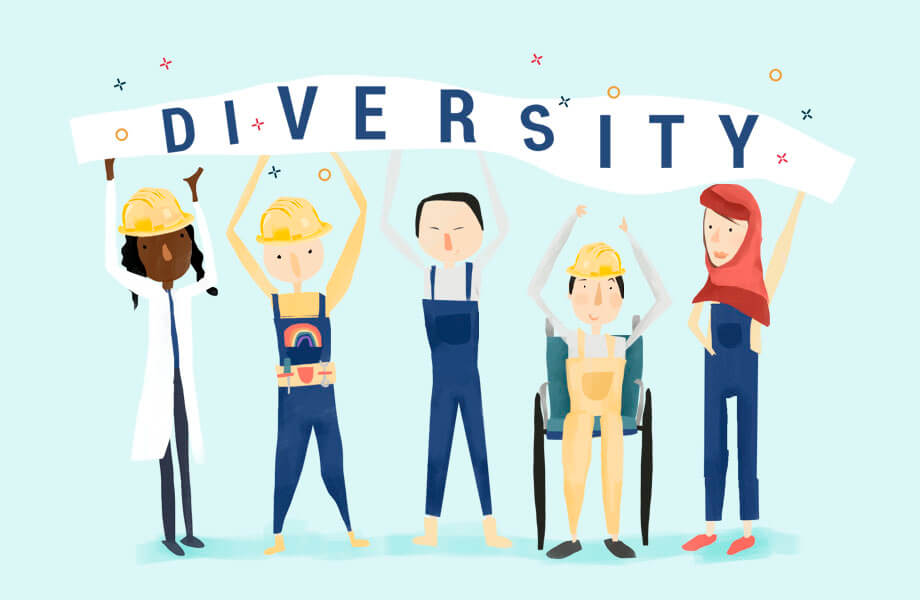Introduction
Cultural diversity is one of the most beautiful aspects of human society. It refers to the existence of different cultural groups within a community, country, or even globally. This diversity can be seen in language, religion, traditions, clothing, food, festivals, and lifestyles. In today’s interconnected world, acknowledging and celebrating cultural diversity has become more important than ever. It not only fosters understanding among people but also enriches societies by blending unique perspectives, skills, and experiences.
What is Cultural Diversity?
Cultural diversity is the variety of human societies or cultures in a specific region or across the world. It highlights how people differ in terms of customs, beliefs, and traditions. Every culture has its unique way of living, which contributes to the global mosaic of human civilization. For example, the music of Africa, the traditions of Asia, and the cuisine of Europe all represent distinct cultural expressions that, together, create a vibrant and colorful world.
Importance of Cultural Diversity
- Promotes Mutual Respect – When we understand different cultures, we learn to respect differences instead of judging them.
- Encourages Innovation – Exposure to new ideas, cuisines, and practices fosters creativity and innovation.
- Strengthens Global Relationships – Cultural diversity reduces barriers and builds stronger relationships across nations.
- Improves Education – Students in diverse classrooms gain broader worldviews, making them more adaptable and empathetic.
- Boosts Economic Growth – Diverse workplaces bring different perspectives, leading to better problem-solving and productivity.
Cultural Diversity in the Workplace
Modern workplaces are increasingly multicultural. Employees from different backgrounds bring unique skills and fresh ideas. A company that values cultural diversity can create a more inclusive and productive environment. According to studies, diverse teams are more innovative and successful. However, businesses must also address challenges such as language barriers, stereotypes, and unconscious bias to make the most of diversity.
Cultural Diversity in Education
Schools and universities play a key role in promoting cultural diversity. By welcoming students from various backgrounds, educational institutions help foster tolerance and unity. Exposure to different cultures at an early age helps students appreciate diversity, build empathy, and become responsible global citizens. Multicultural classrooms encourage students to share their perspectives, leading to more enriched learning experiences.
Examples of Cultural Diversity Across the World
- India – Known for its festivals, religions, and languages, India is one of the most culturally diverse countries.
- United States – A melting pot of cultures, traditions, and communities from across the globe.
- South Africa – Popularly called the “Rainbow Nation” because of its mix of ethnic groups and traditions.
- Brazil – Famous for its blend of Portuguese, African, and Indigenous cultures.
- United Arab Emirates – Home to people from over 200 nationalities working and living together.
Benefits of Cultural Diversity
- Social Harmony – Encourages peaceful coexistence and reduces conflict.
- Learning Opportunities – Provides a chance to explore different art, music, food, and languages.
- Global Understanding – Helps in developing a shared sense of humanity across borders.
- Personal Growth – Exposure to diverse ideas expands one’s worldview and emotional intelligence.
Challenges of Cultural Diversity
While cultural diversity has numerous advantages, it also brings challenges that must be addressed:
- Miscommunication – Language barriers may lead to misunderstandings.
- Stereotyping – People may form incorrect assumptions about others.
- Discrimination – Minority groups sometimes face unfair treatment.
- Integration Issues – Adapting to new cultural environments can be difficult.
To overcome these challenges, societies must promote inclusion, tolerance, and mutual respect.
How to Promote Cultural Diversity
- Education and Awareness – Schools should include cultural studies in their curriculum.
- Inclusive Policies – Governments and organizations should ensure equal opportunities for all.
- Celebrating Festivals Together – Public events showcasing different cultures foster unity.
- Cross-Cultural Communication Training – Workplaces can train employees to understand diverse backgrounds.
- Media Representation – Movies, books, and TV shows should positively represent different cultures.
Cultural Diversity and Globalization
Globalization has brought people closer, creating opportunities to learn from each other’s cultures. Migration, international trade, and tourism have all contributed to cultural exchange. While some fear that globalization may lead to cultural homogenization, it has also allowed people to preserve and share their unique traditions on a larger scale.
Conclusion
In a world where borders are becoming less significant, cultural diversity stands as a powerful force for peace, creativity, and progress. By appreciating and respecting different traditions, societies can build stronger connections and overcome prejudice. Whether in schools, workplaces, or communities, embracing diversity ensures a brighter and more united future. To explore more knowledge-rich resources on global learning and culture, visit https://Educationblender.com/.
